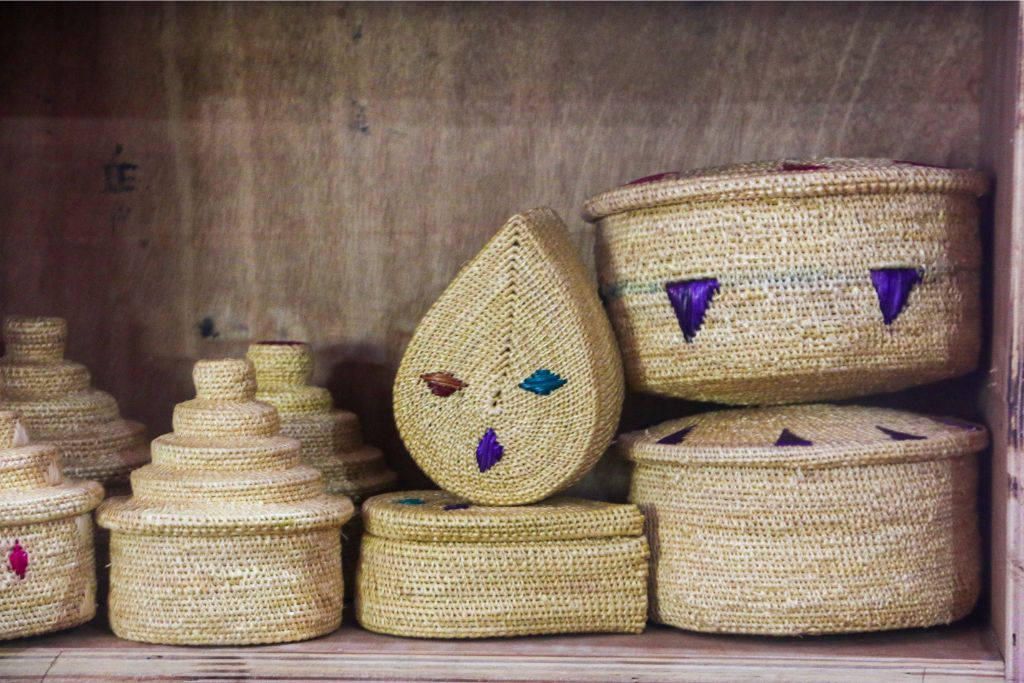
All that glitters in Antia village is indeed gold
The centuries-old use of golden grass in making crafts is financially empowering the women of Jajpur in Odisha. A GI tag and aggressive marketing can improve things further.
Women of Antia village of Jajpur district in Odisha have struck a gold mine in the unlikeliest of places. The kaincha grass (Vetiveria zizanioides) grows abundantly in the marshy lands and riverbeds of Jajpur. This wild reed may appear to be a pest at first glance but it is instrumental in providing a sustainable source of livelihood to the local women who otherwise do not have many opportunities in the sleepy villages of Jajpur. The age-old craft is practised mostly by women in Odisha.
Not many have even heard of Antia village where women spend all day creating products out of golden grass. This nondescript village is the unexpected candidate for a craft, the visibility and sales of which are now slowly picking up, adding weight to the economic transformation of the rural women of Odisha. At present women making golden grass crafts are mostly employed in Jajpur, Puri, Jagatsinghpur and Kendrapara districts of the state.
Sitting on a ‘gold mine’, the women of Antia village create assorted decorative and daily utility products from the golden grass. The product range includes aesthetically stunning baskets, boxes, trays, pen stands, mats, designer jewellery, lampshades, wall hangings, bags, toys, caps, coasters, flower vases, key chains and bowls with lids. Thanks to the little capital that this ancient craft needs, it goes a long way in empowering the local women to create a long-term and sustainable livelihood source, thereby helping them to contribute to the overall family income.
Also Read | How Manipur’s rural women are weaving wonders from Kauna weed
Several housewives and young girls from the village are regularly trained by officials of self-help groups. As per Bipin Kumar Raut, from the Adi Shakti Self Help Group, “Many villagers of Antia village are dependent on the income generated by making golden grass products. The women are compensated as per their skill.” The income generated is used by the artisans for building homes, improving the standard of living, better education of their children and even marrying off their children.
The grass which grows up to 6 feet tall is split and a big needle is used for weaving the products. After the rainy season, the women wade through the marshy lands and collect the reed. The green grass turns golden as it dries for days under the harsh sun of Odisha. This is why it is known as the golden grass.
Also Read | Naga villagers revive traditional crafts and weaves
The women then collect at a building allotted by self-help groups and spend the major portion of the day creating their ‘masterpieces’. The fine quality, thin strands, delicate weaving and light weight sets these products apart from the usual cane and bamboo pieces that have flooded the markets. While the artefacts are mostly golden, sometimes primary colours are added to add life to the designs and patterns. Only natural vegetable dyes are used for colouring.
Also Read | Odisha women earn lakhs by cooking patua from veggie peels
These low-maintenance, eco-friendly and durable products make for a great alternative to plasticware. These women also set up stalls at several crafts fairs, local festivals such as Jajpur Mahotsav and exhibitions in and outside Odisha to sell them directly to people. The golden grass products are also available online.
Also Read | Humble broom sweeps poverty from tribal hamlets in Odisha’s Koraput
There is an urgent need to identify and protect the ancient art and crafts of Odisha. A Geographical Indication (GI) tag could ensure that, the officials from the self-help groups say.
The lead image at the top shows golden grass been traditionally used for creating intricate handicrafts like baskets, mats, & decorative items (Photo by Abhinav Singh)
Abhinav Singh is a travel blogger based in New Delhi.







